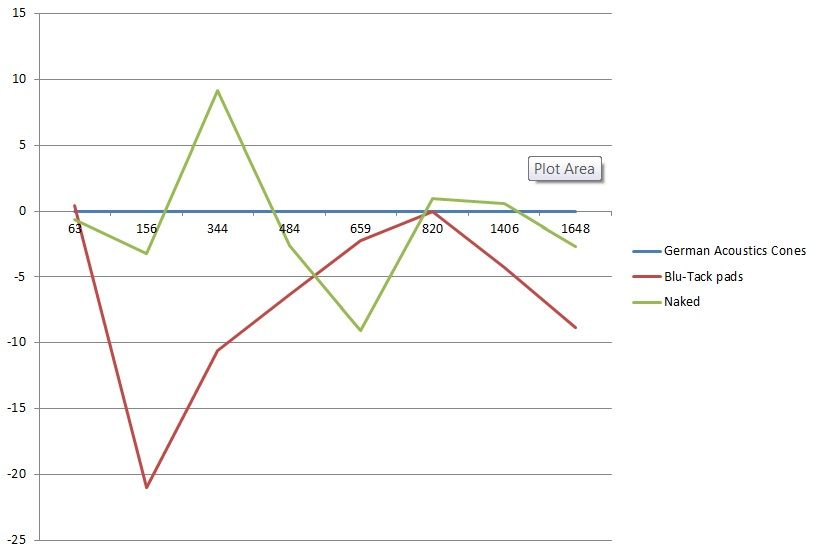Richard skrev:Resultatet visar att det inte alltid är självklart vad som är bäst, tex. blev resultaten bättre med en stabil högtalarelåda som är extremt lätt och styv ( celestion 600 av aluminium ) än en tung låda ( wilson watt ) som är kraftigt stagad om vi talar resonanser som stör upplevelsen av ljudet.
Så tolkar jag inte det Atkinson skriver. Han tar upp de båda högtalarna som bra exempel på olika sätt att hantera resonanser i högtalarlådor.
John Atkinson skrev:I used the PVDF transducer to look at two loudspeakers widely regarded as being successful attempts to minimize cabinet resonant problems.
John Atkinson skrev:To judge from these two examples, loudspeakers that are subjectively "good" when it comes to cabinet resonant problems are either excited equally across the band or at just one frequency—if the former, the decay must be quick; if the latter, not only must the decay be quick, but it helps for the mode to be high in frequency, above the critical midband.
Han jämför inte de bägge konstruktionssätten för att se vilket som är bäst utan han undersöker dem bägge för att se vad som gör dem bra.
Richard skrev:Spikes låter högtalaren stå still vid många frekvenser ( utom de högsta ) .
Med mjuka fötter är högtalaren rörlig vid alla frekvenser.
Det är också en misstolkning av artikeln IMO. För att illustrera detta lite bilder och citat (Hevi har redan förklarat detta i text):
Edit: detta är alltså inte bilder från ursprungartikeln utan grafer gjorda i excel baserade på data i tabellform ur artikeln, producerade av underteckad.

John Atkinson skrev:The winner in this comparison, however, is the cheapest: the three pads of Blu-Tack, squashed flat between the base of the speaker and the stand top-plate. As can be seen in fig.3, not only do these pads reduce the amplitude of the main mode by more than 6dB, and almost zap the 156Hz and 344Hz modes out of existence, they significantly clean up the cabinet wall's HF vibrations.

John Atkinson skrev:For comparison, fig.9 shows the effect of replacing the cones with three small pads of Blu-Tack between the speaker and the stand top plate. The entire region below 300Hz cleans up, the lower sideband at 258Hz goes down in level, while the HF hash is also reduced.
Sammanfattning:
John Atkinson skrev:As a rule of thumb, if you want to suppress cabinet resonances the least, you should support your speaker on upward-pointing spikes or cones. If you want to suppress resonances the most, you should use thin pads of Blu-Tack about the size of a nickel.
Richard skrev:Miper skrev:Vill bara igen förklara hur jag upplevde spikes kontra SD
på mina högtalare.
SD- Odistinkt, grötigt, bumlig bas.
Spikes-Distinkt, detaljerat med klippfast bas.
Ganska exakt vad jag själv upplevt med många högtalare.
Det kan i alla fall inte förklaras av det som John Atkinson kommit fram till, snarast tvärt om; samtliga "mjukfötter" var bättre på att dämpa resonanser i basregistret jämfört med spikes.


